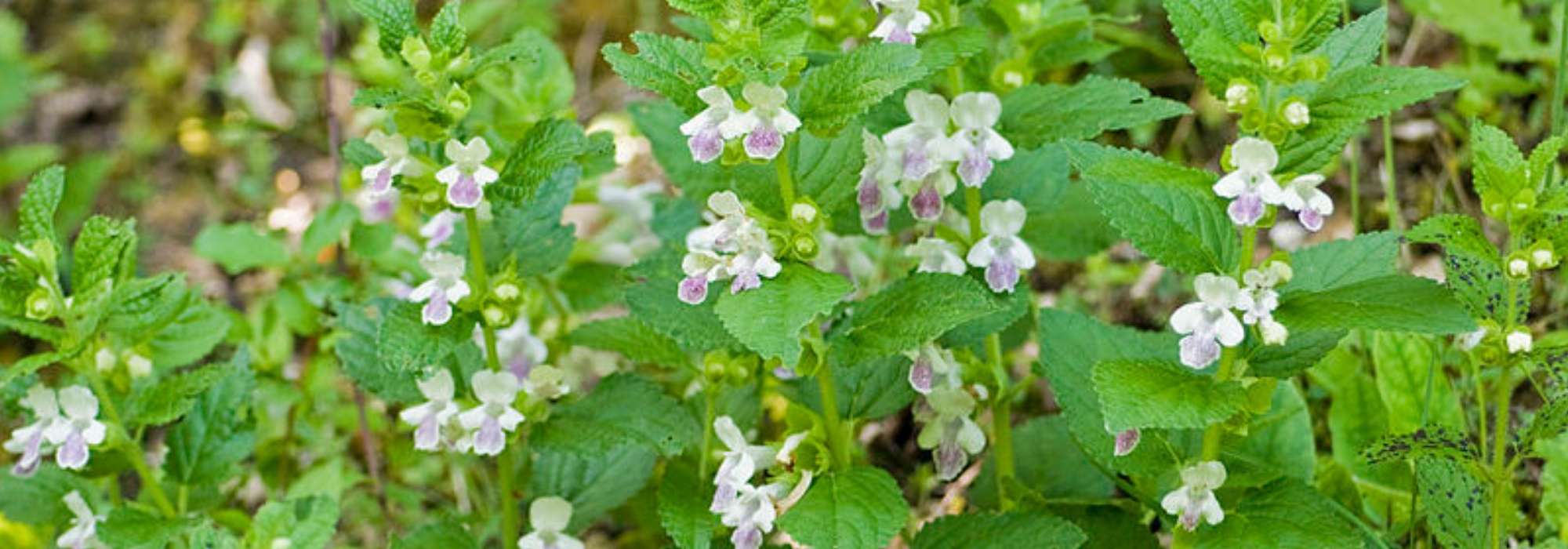
Melittis melissophyllum, Melitte: planting and care
Contents
Melitte in a nutshell
- Single and beautiful perennial related to nettles
- Extremely refined, its flowers resembling small orchids bloom in spring or summer
- Its pretty downy and very aromatic foliage recalls that of lemon balm
- Undemanding regarding soil type and aspect, perfect even under trees where nothing grows
- Original, hardy and easy to grow, ideal for natural or wild gardens
A word from our expert
Melittis melissophyllum, this woodland perennial also called bastard balm, melittis with balm‑like leaves or woodland melittis, is a pretty herb related to nettles, well known for medicinal properties used notably in herbal teas.
With its beautiful, highly fragrant edible foliage and its small, elegant two‑lipped flowers in white or pink, it adds, in spring or summer depending on climate, a touch of simplicity to natural, naturalistic or wild gardens, or romantic ones.
This perennial will perform reliably provided it is planted in a part‑shaded spot in the garden and in any good, well‑drained soil.
Perfectly hardy, easy to grow in wooded gardens, it is ideal for shaded areas often difficult to plant, as it even manages to grow even under trees, on edge of a shrub border or even in a pot.
Discover the Melittis, this rare, simple and elegant perennial plant, and all our perennials for dry shade!
Description and botany
Botanical data
- Latin name Melittis melissophyllum
- Family Lamiaceae
- Common name Melittis with lemon-balm-like leaves, Wood melittis
- Flowering April to July
- Height 0.15 to 0.70 m
- Exposure sun, partial shade, shade
- Soil type light, fresh, well-drained
- Hardiness down to -15°C and beyond
La Melittis melissophyllum commonly called Melittis, wood melittis or Melittis with lemon-balm-like leaves is an herbaceous perennial of the Lamiaceae family, growing in open, damp woods and along wooded paths of western Europe. Genus contains only a single widespread species in France, often mistaken for lemon balm (Melissa officinalis) or white nettle, to which it is closely related. Melittis melissophyllum has given rise to two hybrids, one with white flowers and the other with white flowers spotted with purple.
Plant quickly forms a lovely clump with a bushy, upright habit, 20–70 cm high and spreading to 50 cm wide.
On sparsely ramified stems bristly with hair, unfold large green leaves, petiolate, ovate, arranged in opposite pairs. Villous, rough and somewhat wrinkled, with crenate margins and prominent veins, they measure 4–8 cm long.
This deciduous foliage, whose shape strongly resembles white nettle and lemon balm, is highly aromatic. When crushed, leaves give off a scent of honey and lemongrass mixed with freshly cut hay.
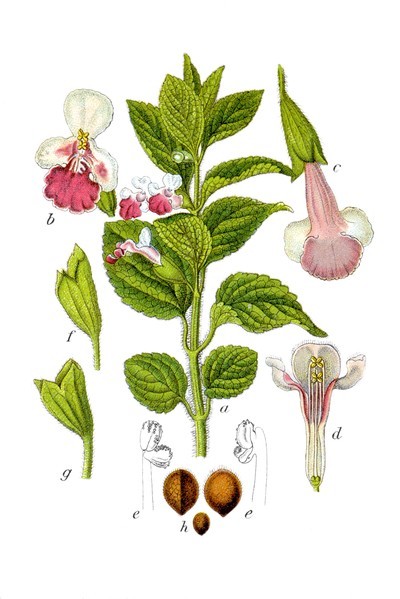
Melittis melissophyllum – botanical illustration by Johann Georg Sturm
On this pubescent vegetation, both dense yet very light, appear small inflorescences notable for their architecture and delicacy, flowering from April to July depending on climate.
Flowers, inclined to one side, are grouped in twos to six in leaf axils of the upper leaves. Initially tubular, they open into a bilabiate corolla 2–4 cm long divided into 4 lobes set within a campanulate, hairy calyx. Upper lip is erect and delicately cut into three small teeth, lower lip divided into three spreading lobes. Each of these exquisite little flowers, pure white or white with lower lip pink or spotted with mauve, releases a cluster of protruding stamens with yellow anthers.
These two-lipped flowers resemble those of nettles, of betony or even tiny orchids.
Particularly nectariferous and melliferous—hence plant’s name (from Greek “mellita” meaning bee)—Melittis flowers are much visited by pollinating insects.
Inflorescences give way to small fruits containing four light-brown seeds that self-seed naturally in gardens.
Perfectly hardy to at least -15°C, Melittis or wood melittis is established throughout France. This woodland plant prefers partial shade though it tolerates sun or full shade, and grows in all soil types including calcareous soils, provided they are light and rich in humus.
Used as a mother tincture, in infusion or tisane for its therapeutic properties similar to lemon balm, Melittis melissophyllum is recognised for sedative, anti-inflammatory and antispasmodic effects. Young leaves are edible and can also be used in salads.

Several colours of wild Melittis: Melittis melissophyllum ‘Alba’, Melittis melissophyllum and Melittis melissophyllum ‘Royal Velvet’
Main species and varieties
Melittis melissophyllum has given rise to two interesting, widespread hybrids: ‘Royal Velvet’, with mauve-lipped flowers, and ‘Alba’, with pure-white flowering.
Most popular
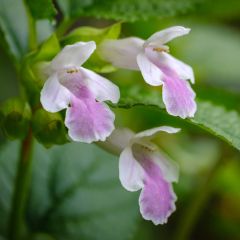
Melittis melissophyllum
- Flowering time June, July
- Height at maturity 60 cm
Our favourites
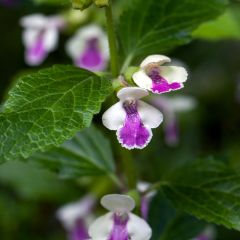
Melittis melissophyllum Royal Velvet
- Flowering time May, June
- Height at maturity 60 cm
Discover other Melittis
View all →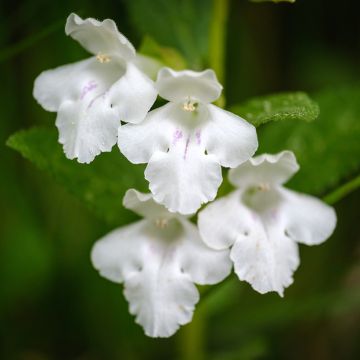
Available in 2 sizes
Available in 1 sizes
Available in 1 sizes
Planting
Where to plant melittis or Melittis melissophyllum?
Melittis or Melittis melissophyllum acclimatises without problem in all our gardens, tolerating negative temperatures down to at least -15°C.
If this perennial of light woodland prefers shady positions, it will tolerate non-scorching sun and even full shade. Unaffected by root competition, it will even grow in dry shade, under trees.
Easy to grow, it adapts to any light soil, not too dry to fresh, well-draining, even calcareous and rather rich in humus.
Taller than wide, it generally occupies 30 to 50 cm in width at ripeness, so give it a spot where it can develop freely.
Easy to live with, it is the plant ideal for natural or wild gardens. It adapts to many situations. In spring or summer it forms a pretty green bush, ideal to bring relief and lightness to slightly untidy borders, to rock gardens, to mixed-borders, to naturalistic prairies or under trees at woodland edges. It is also useful to cover the base of a hedge or the feet of conifers. It is also well suited to bucket culture to flower shaded terraces and balconies.
When to plant melittis or Melittis melissophyllum?
Melittis with lemon-balm leaves is planted in spring from February to May or in autumn from September to October, outside frost periods.
How to plant lemon-balm-leaved melittis or Melittis melissophyllum?
In open ground
For a beautiful airy effect in a border, plant our melittis in buckets in groups of 4 to 6 per m2, spacing plants 0.40 to 0.60 cm in all directions. In heavy soil, add compost and gravel to lighten it and improve drainage.
- Work soil well to decompact it
- Dig a hole 2 to 3 times the volume of the bucket
- Add river sand or gravel to bottom of planting hole
- Backfill
- Water well
- Mulch soil after planting
And find our advice on how to plant a perennial well!
In pot or in planter
- Spread a good layer of gravel or clay balls at bottom of a perforated container
- Plant the bucket upright in a sandy, well-draining mix of garden soil, coarse sand and compost
- Mulch the base
- Water regularly, never allowing substrate to dry out between waterings
Read also
Nettle: a plant with many benefitsCare and maintenance
Hardy and vigorous, Melittis needs almost no care once well established in free-draining soil.
Although plant tolerates soils dried out by tree roots and can withstand occasional drought, still give it regular watering from June to September, first year.
Mulch in spring with a good layer of dry straw or turf to keep sufficient coolness at plant base and fertilise at same time.
Melittis spreads spontaneously and naturalises easily from its small seeds. Cut back plant after flowering if you prefer to prevent self-seeding.
In autumn, cut back old foliage to encourage emergence of new shoots in spring.
Melittis in pots require more frequent watering at least once a week, even in winter if it does not rain, as well as a liquid feed every 15 days to encourage flowering.
All above-ground parts of plant die back in winter: mark its location if necessary with stakes to avoid damaging clumps while weeding and to make it easier to control gastropods in spring.
How to care for a perennial? Here are our tips !
Potential diseases and pests
Melittis melissophyllum is hardy and has no known diseases. In poorly drained soil that becomes saturated with water in winter, it may suffer root rot.
Its fresh young shoots are vulnerable to slugs and snails at the start of the growing season. Protect it from their attacks with our 7 ways to fight slugs effectively and naturally.
Propagation
To multiply Melittis with lemon balm leaf, two options: sowing or division of clumps in spring.
By direct sowing
This perennial self-seeds in light soil and is very easy to multiply from seeds harvested in autumn in garden. Sowings are done from February to May depending on climate directly in pots or outdoors. In cold regions, wait until May when frosts have finished.
- In well-aerated soil, sow in groups of 3 to 5 seeds spaced 40 to 60 cm apart
- Keep soil slightly moist until emergence of first shoots after about 10 days
Follow our advice to succeed in sowing perennial plants!
By dividing clumps
Carry out when plant is well rooted, at least after 2 years following planting.
- Using garden fork, lift clump without damaging roots
- With spade, take a few shoots from clump periphery
- Replant these divisions immediately in garden in light, well-worked soil
Associate
With its unpretentious appearance, Melittis naturally finds its place in all natural and wild gardens, in the meadow-like borders of a cottage garden, in shady rockeries, woodland edges as well as in naturalistic prairies. It is ideal in a shade garden or under trees, where few plants will grow, surrounded by wild-looking plants and dry-shade perennials such as Great comfrey.
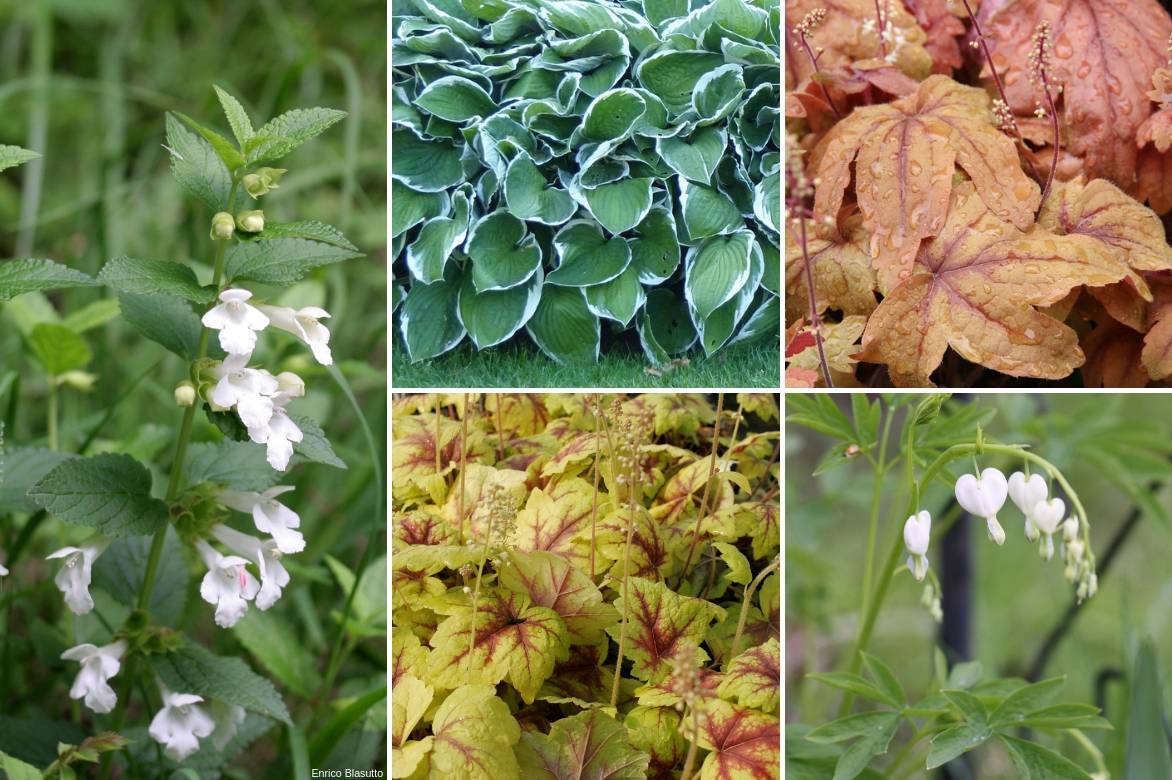
A planting idea for a shady area: Melittis melissophyllum ‘Alba’, Hosta fortunei ‘Francee’, Heucherella ‘Sweet Tea’, Heucherella ‘Stoplight’ and Dicentra spectabilis ‘Alba’ (syn. Lamprocapnos spectabilis ‘Alba’)
Its pastel, delicate flowering makes it indispensable in romantic spring scenes, accompanied by hybrid pulmonarias, hardy geraniums and Omphalodes Cappadocica.
On the edge of a cool, romantic border, plant it at the foot of shrub roses or alongside the large leaves of Hostas and the colourful foliage of Heucheras and creeping bugles.
Discover our planting ideas in our advice sheet “What to plant under trees?”
Useful resources
- What to plant under trees?
- Low-maintenance garden: discover essential plants!
- Have a wooded garden; best perennials for dry shade are here!
- Discover 2019’s most beautiful perennials!
- Subscribe!
- Contents
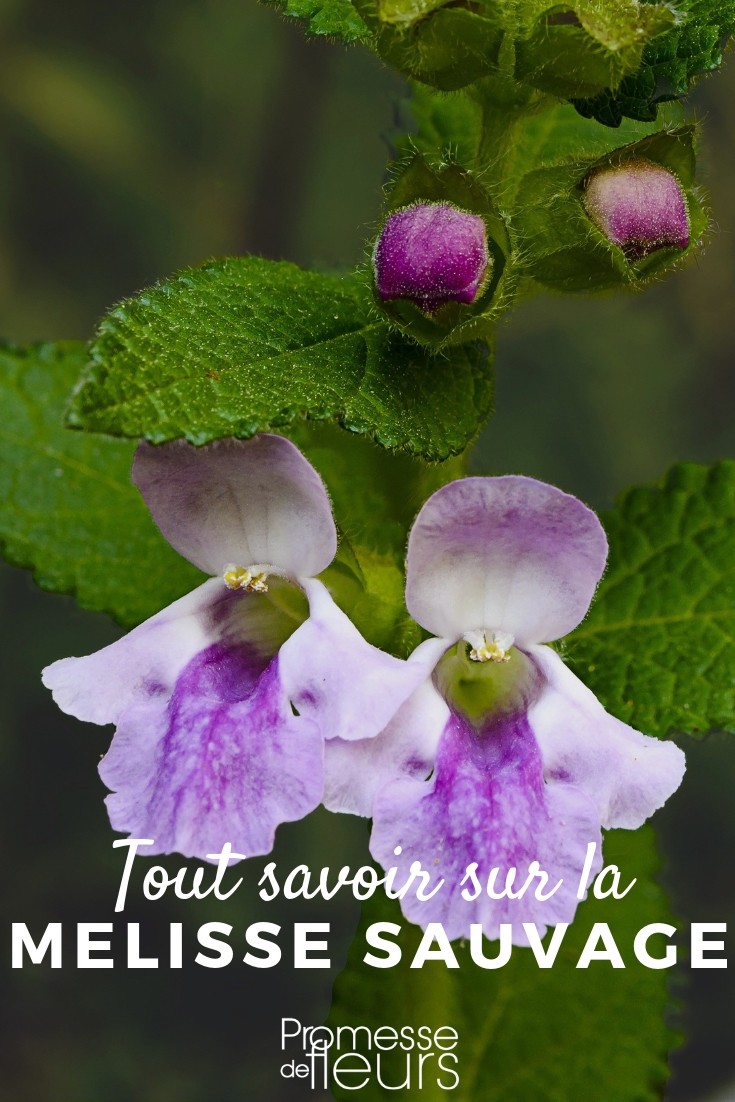

































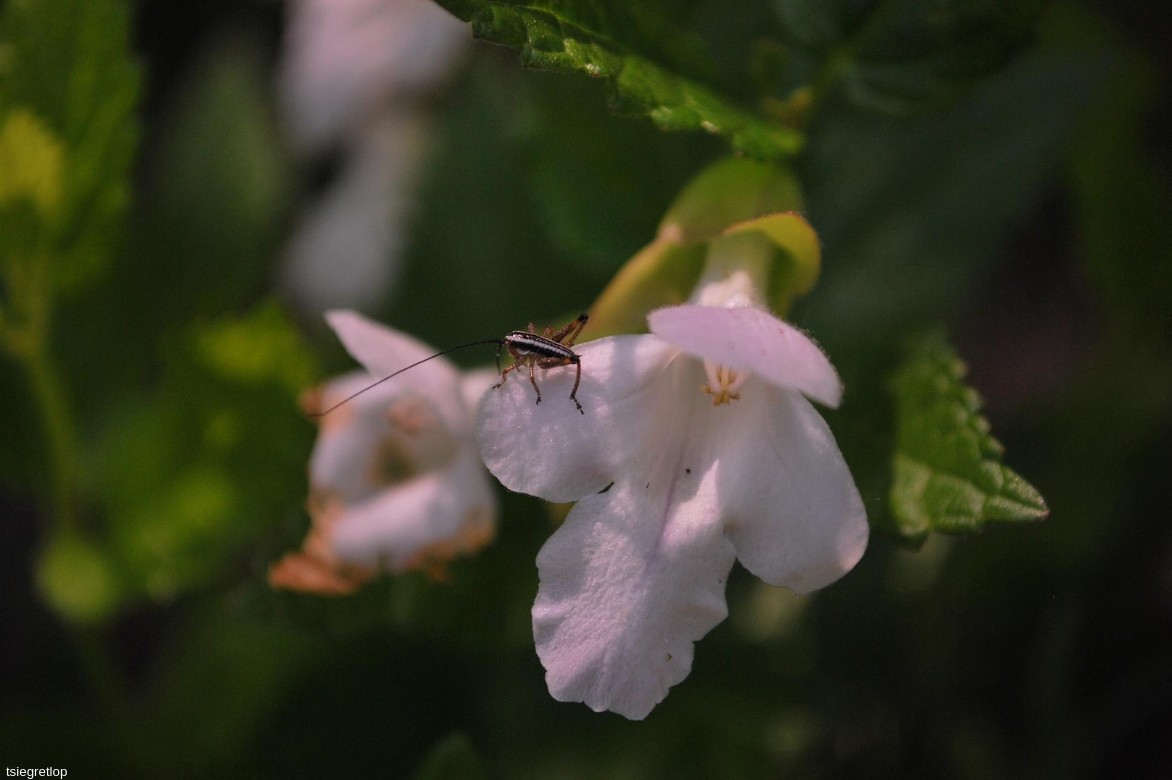
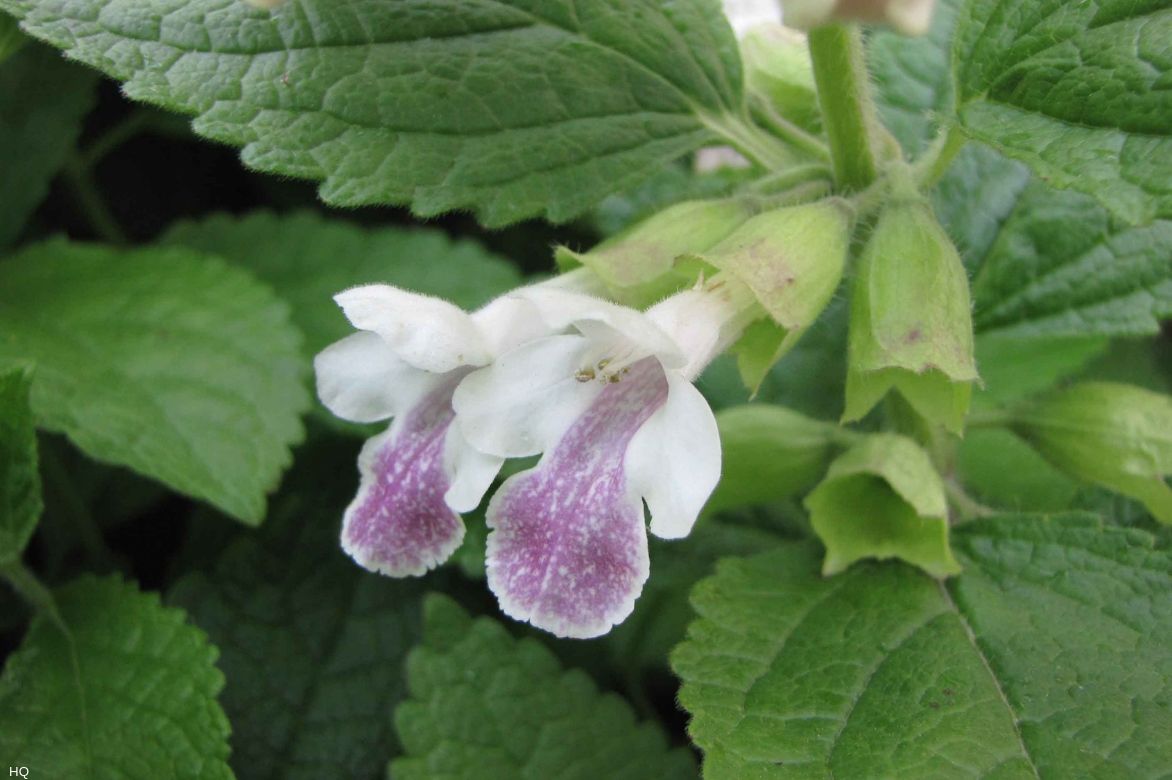
Comments